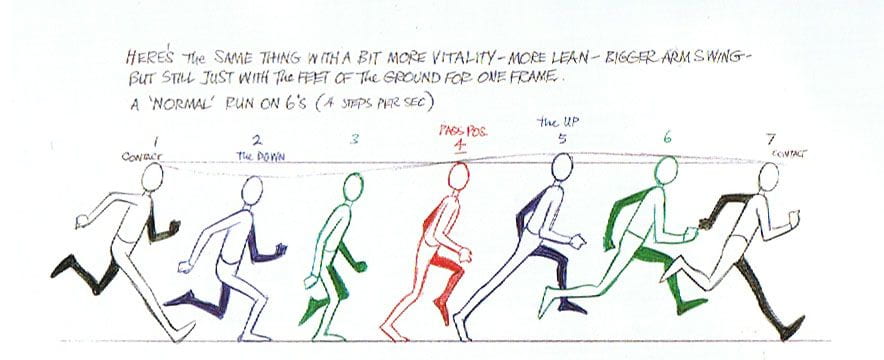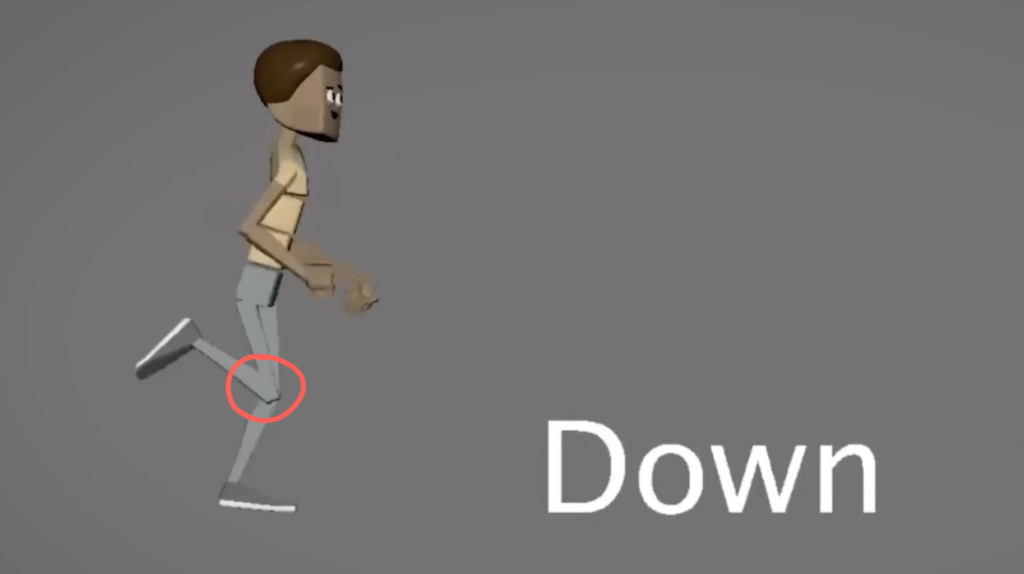
Disney Animation Supervisor and AnimSchool Instructor Angelo Sta Catalina shares his best tips on animating a run cycle.
In this snippet from an AnimShool class lecture, Angelo discusses the key poses and principles that make a run cycle come to life. Angelo breaks down key poses including the contact, down, push, and peak, providing valuable tips for naturalistic and stylized runs while preserving the core principles of body mechanics.
A run cycle shares many poses with a walk cycle, which typically consists of a contact pose, down, passing, up, and back to the contact pose. However, there are some crucial differences – in a run, the character is in the air for longer than they would be for a walk, resulting in some different key poses.
Run Cycle Key Poses

Contact > Down > Push > Peak > Contact
Contact: Front foot (typically heel) makes contact with the ground
Down: Lowest, most “squashed” pose; the leg in contact with ground is bent
Push: Starting to “push” off into the air; in some cases, this pose may already be fully in the air
Peak: Highest pose; character is fully in the air, and knees generally stay still from previous pose

Reality vs. Exaggeration
When creating your poses and observing them in your reference(s), think about how exaggerated or realistic you want the run cycle to be.
In Angelo’s reference of a track runner, he points out a few characteristics that make the run cycle appear more true to real life: in the contact pose, the runner lands on the ball of the foot rather than the heel. The feet are closer together, and the leg that makes contact with the ground is closer to the center mass of the body.In more exaggerated runs, animators might have the character’s foot land farther away from the body; in these cases, it is the heel that makes contact with the ground to compensate for the distance of the foot.
To achieve the feeling of a weight shift, Angelo recommends looking closely between the contact and down poses. In the contact pose, try to find a straight leg, then contrast that with a bent leg in the down pose. In a more realistic and natural run cycle, the runner may not always completely straighten their leg – animating with this in mind can result in a more realistic animation. However, keep in mind that pushing the poses to have a straight leg can help with the clarity of the overall mechanics of the run.

Be Aware of Tangents in Your Poses!
Tangents are common occurrences in reality, and you may end up with some in your animation, especially if you are using a realistic reference – just be sure they are intentional, or make small adjustments to avoid them!

Watch the full excerpt from an AnimSchool class lecture here:
At AnimSchool, we teach students who want to make 3D characters move and act. Our instructors are professionals at film and game animation studios like Dreamworks, Pixar, Sony Pictures, Blizzard & Disney. Get LIVE feedback on your Animation from the pros.
Learn more at https://animschool.edu/

Leave a Reply